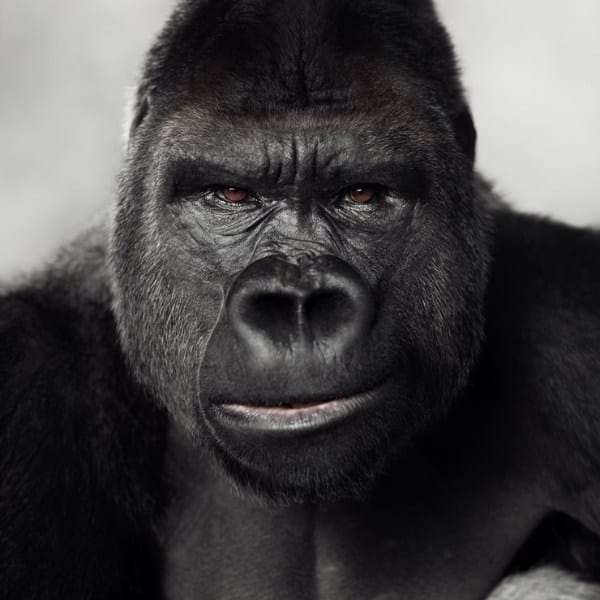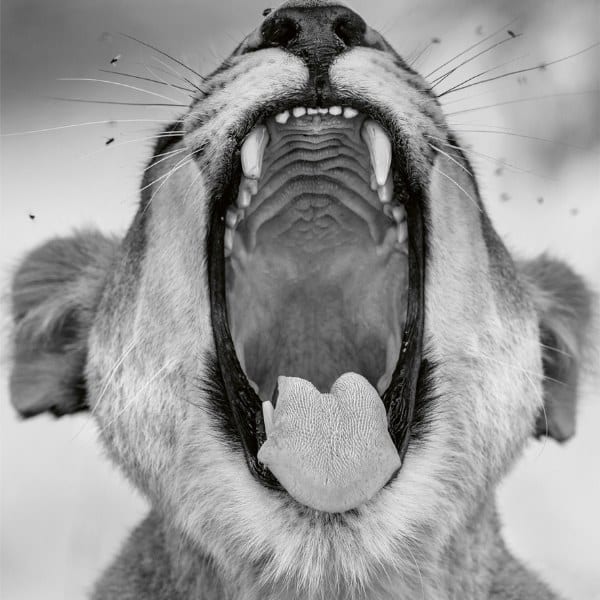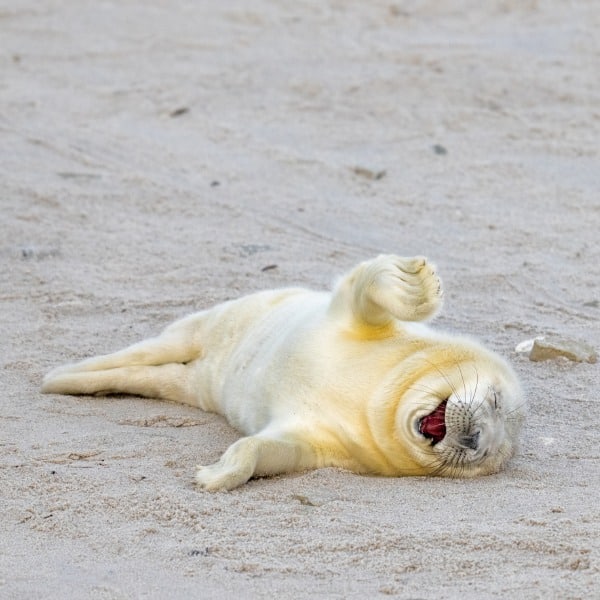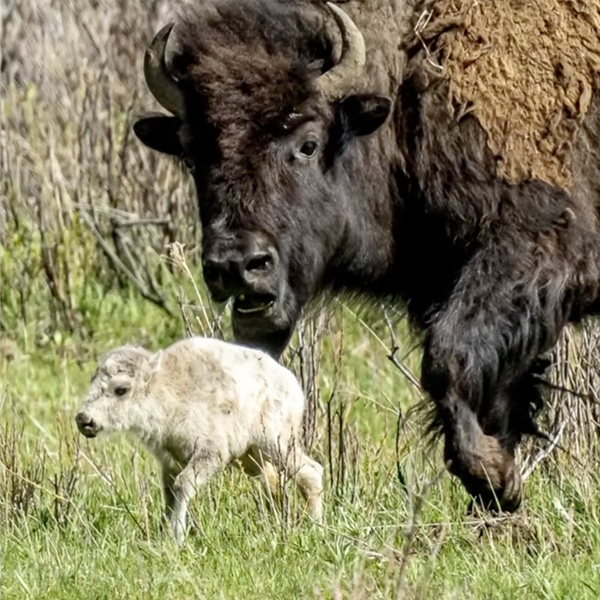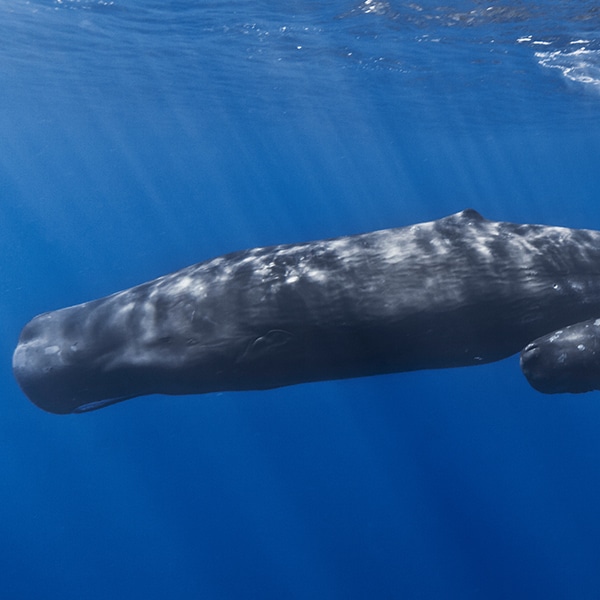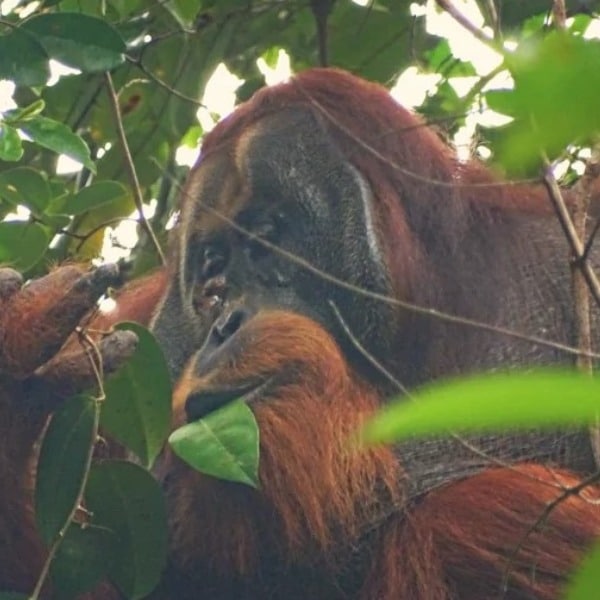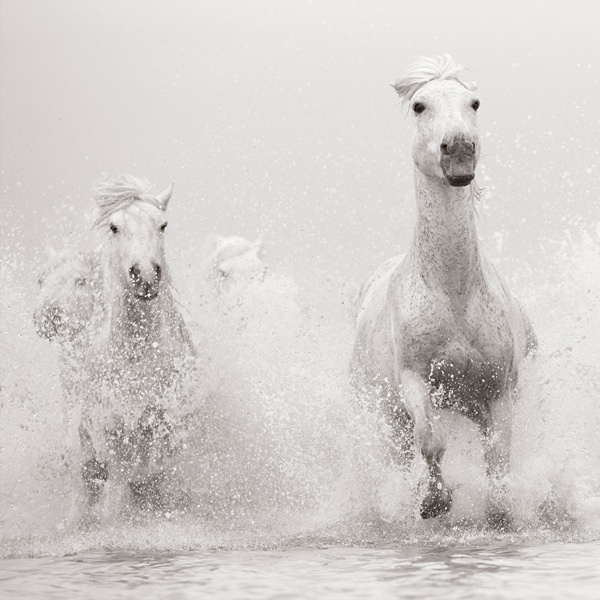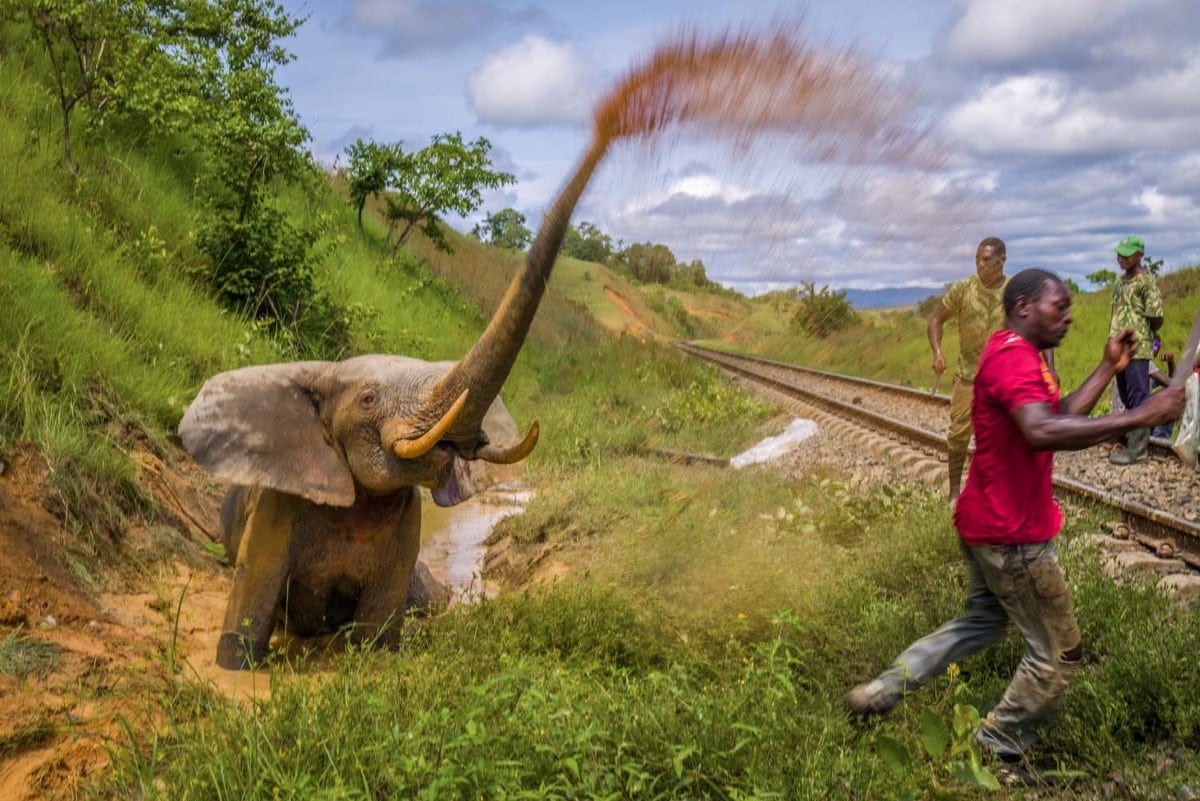
After being shot a male elephant shows its frustration as it angrily sprays water at the crowd of bystanders after one of them had tried to cut off the elephant's trunk. During the night, the elephant was hit by a train transporting manganese between Moanda (in Gabon’s Haut-Ogooué province) and Gabon’s capital Libreville. The collision scattered the elephant's right hip and a group of eco guards were called to the scene to do a full assessment of the incident. Since the elephant’s life couldn’t be saved, the park director decided it needed to be shot and that the meat would be distributed to the Lopé community. Unfortunately, the shot didn’t kill the elephant, and since there was only one bullet available the elephant is still fighting for its life. After the shot was fired, the animal got really angry and started throwing a railway tie through the air and spraying water at the bystanders, after which the bystanders started to fight back and started throwing rocks at the injured animal. Meanwhile, the community seems to have decided not to wait for the passing of the animal, but to kill it using machetes. NOTE: I was allowed to join but not allowed to photograph the shooting and the cutting.
Dutch photographer Jasper Doest has dedicated his career to “giving a voice to nonhuman lives.” His award-winning photography tells visual stories of wildlife in desperate need of attention. Now his work is being honored within the context of the GDT European Wildlife Photographer of the Year competition.
Doest's moving photostory about endangered African forest elephants in central Gabon has earned him the 2023 Fritz Pölking Prize. The award is named after esteemed German nature photographer and author Fritz Pölking, who passed away in 2007, and is given out annually for an outstanding portfolio of work.
Having majored in ecology, Doest is sensitive to the interconnectedness of all life on Earth. Through his photography, he looks to explore the relationship between humans and nature. His award-winning series A fragile refuge for forest elephants explores one of central Gabon's last safe havens for forest elephants—the rainforest of Lopé National Park. Doest spent two months on location in Gabon working on the story for National Geographic.
By showing how climate change is affecting fruit production in the rainforest, which cuts into the elephants' food supply, Doest clearly demonstrates how even these safe spaces are at risk. Through his work, it's clear that the consequences of human actions are all around us, and spread far and wide into areas we can't even imagine.
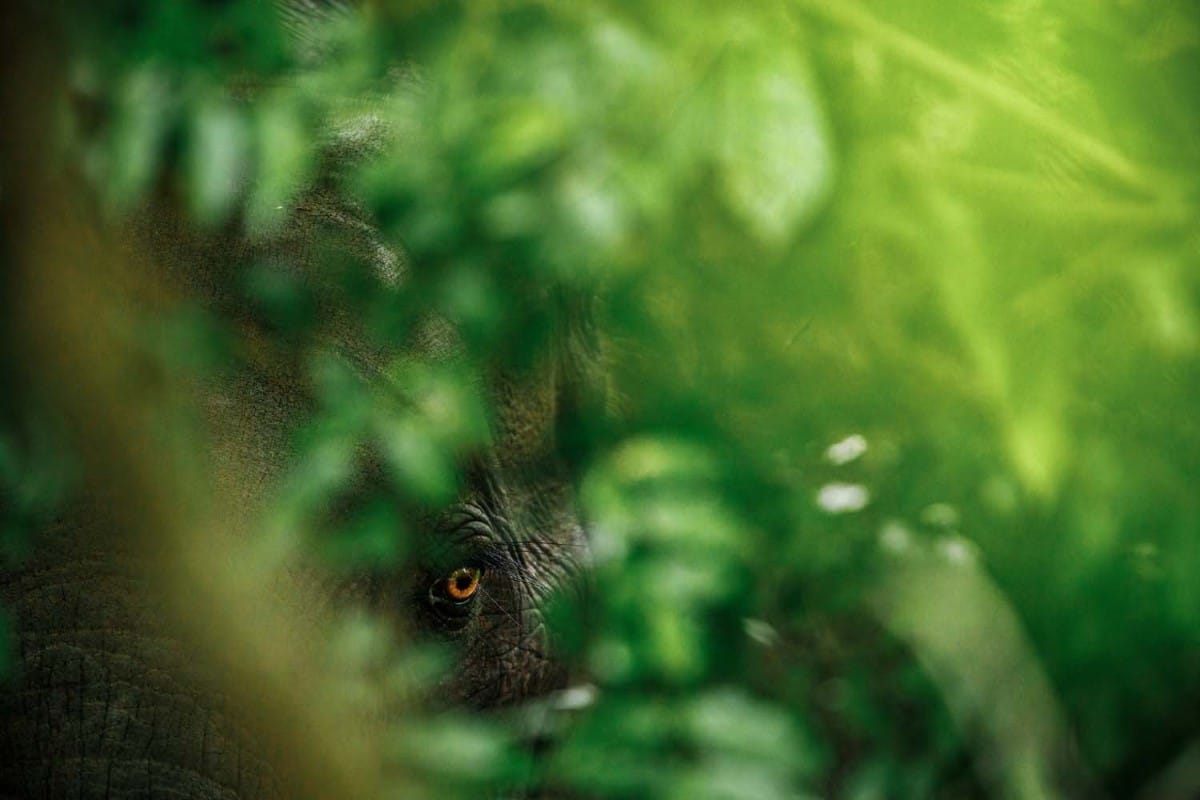
An African forest elephant in the dense rainforests of Lopé National Park. Their preference for dense forest habitat prohibits traditional counting methods such as visual identification, but recent research using DNA from dung samples has estimated 95,000 forest elephants to exist worldwide, with Gabon being the stronghold for these large herbivores. African forest elephants are smaller than African savanna elephants, the other African elephant species. Their ears are more oval-shaped, and their tusks are straighter and point downward, which allows them to move through the dense vegetation more easily. African forest elephants live in family groups of up to 20 individuals and forage on leaves, grasses, seeds, fruit, and tree bark. Since the diet of forest elephants is dominated by fruit, they play a crucial role in dispersing many tree species, particularly the seeds of large trees which tend to have high carbon content. They are therefore referred to as the ‘mega-gardener of the forest'.
Doest also documents the harsh realities of the wildlife refuge, which has train tracks running through it. While these high-speed trains often hit and injure the elephants, it seems that economics takes precedence over what is best for these endangered animals. Witnessing these injuries and the subsequent handling of the events is something that Doest will never forget.
“I am haunted not only by the tragedy that occurred but also by the larger story of human greed that underlies it—there is a railway that runs through a National Park, primarily for the purpose of transporting a valuable mineral,” he wrote. “African Forest Elephants are on the brink of extinction, but meanwhile they are seen here as collateral damage to the global mining industry.”
Here's hoping that through Doest's work, which shines a spotlight on these tragedies, pressure can be brought to change the situation in order to help this dying species.
Wildlife photographer Jasper Doest won the 2023 Fritz Pölking Prize for his heartbreaking essay on endangered African forest elephants in central Gabon.

On a gloomy day, well before sunrise, a forest elephant grazes on the open savanna together with her young. Looking at the female, she’s clearly in bad physical condition, with individual ribs clearly visible, depressions in front and back of the pelvic bone, and a prominent backbone from tail to head, with deep depressions in the lumbar region. After analyzing over 2500 photos from 1997-2018, scientists from the University of Stirling have detected long-term declines in forest elephant body condition at Lopé. As this data is correlated to the decline in fruit production in the forest, these declines in both plant reproduction and elephant body condition are indicative of system-wide change and are expected to have disproportionate impacts on the functioning and metabolism of the ecosystem. As we realized the importance of this individual for our story, we tried to get closer, but soon after she fled into the forest. After speaking with Robin Whytock, this elephant would probably rate body condition 1-2 on the scale of 1-10 that was used during the study, with 1 being the lowest (Robbie: “basically dead”).
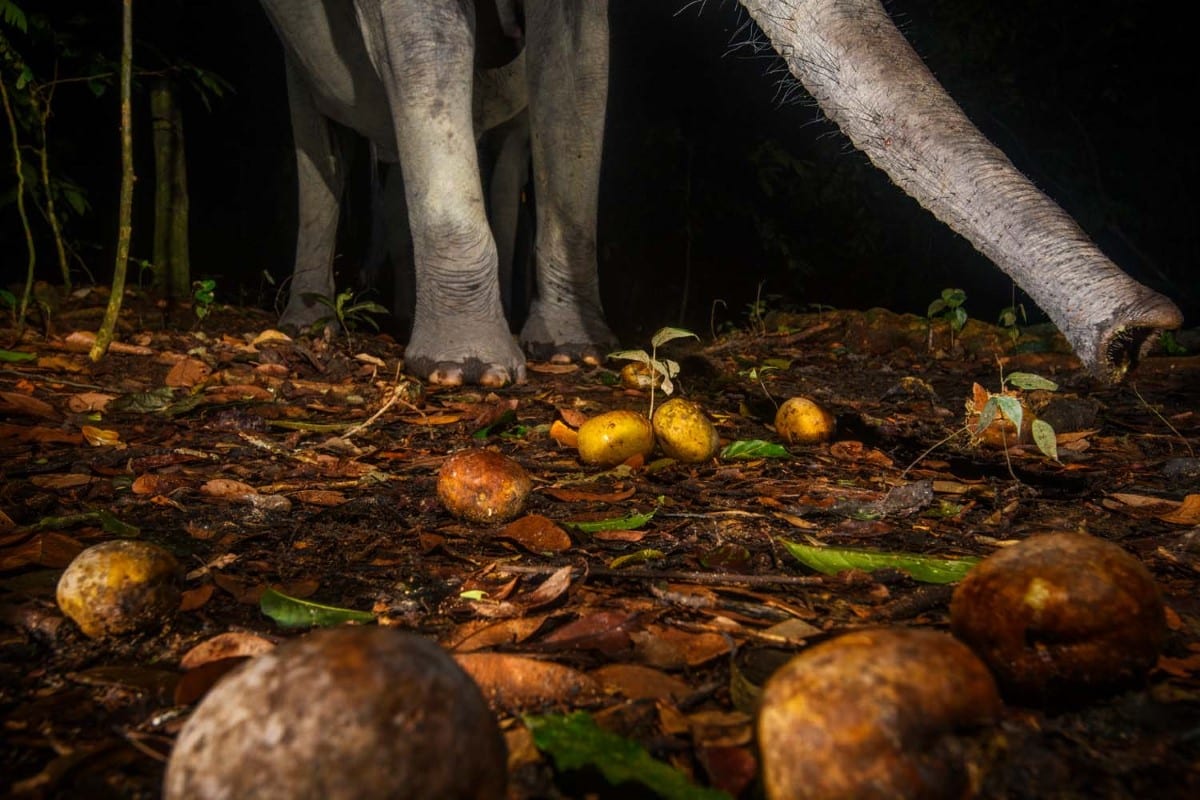
Elephant foraging from Detarium fruits. For Detarium macrocarpum to germinate, it has to pass an animal’s digestive tract. Therefore this species’ seed dispersal depends fully on the forest’s megafauna. The forest elephant (Loxodonta cyclotis) is the largest agent of seed dispersal in African rainforests. It has a digestive system that allows many seeds to pass undestroyed. NOTE: After the first shot the elephant got spooked by the strobes and left and never showed natural foraging behavior in front of the camera with strobes.
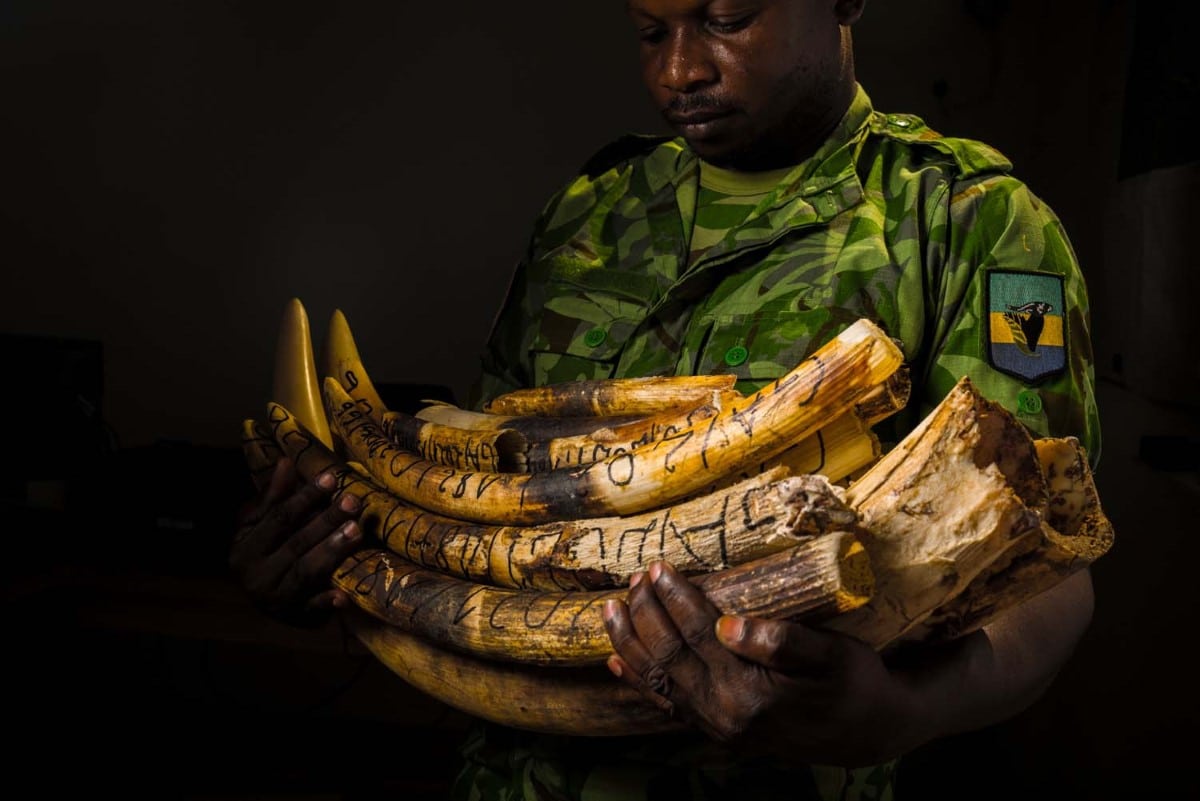
Chef de Service Lutte Anti-Braconnage (head anti-poaching) Landry Babenangoye holds the tusks of elephants that were hit by trains earlier this year. Until December 1, 2021, 12 elephants were killed by train accidents in 2021 (we will need to check the total number at the end of the year, as it’s likely that more incidents will follow as I’ve been told that December is the worst, as elephants are attracted by the ripe mangos growing in the area of the train track). Eco-guards managed to secure the ivory in most cases, as poaching for ivory is the most immediate threat to African forest elephants. All ivory is registered in Lopé and sent to Libreville after the registration process. Forest elephant populations declined by 62% between 2002 and 2011 and during that period, the species also lost 30% of its geographical range, with Gabon being the stronghold for this species. As this downward trend continues, the African forest elephant was declared Critically Endangered by the IUCN in 2021. Incidents with trains happen regularly in Lopé National Park (4 more accidents happened during my remaining two weeks in Gabon) as the track runs through Lopé National Park and crosses many natural corridors. While the park director had his team do a full assessment of possible conflict areas along the track, the railway company has not done anything with this information. The railway company also refuses the trains to slow down as a result of economic pressure as the trains mainly transport manganese, which is Gabon's second largest export product, accounting for roughly 11% of Gabon's total exports.
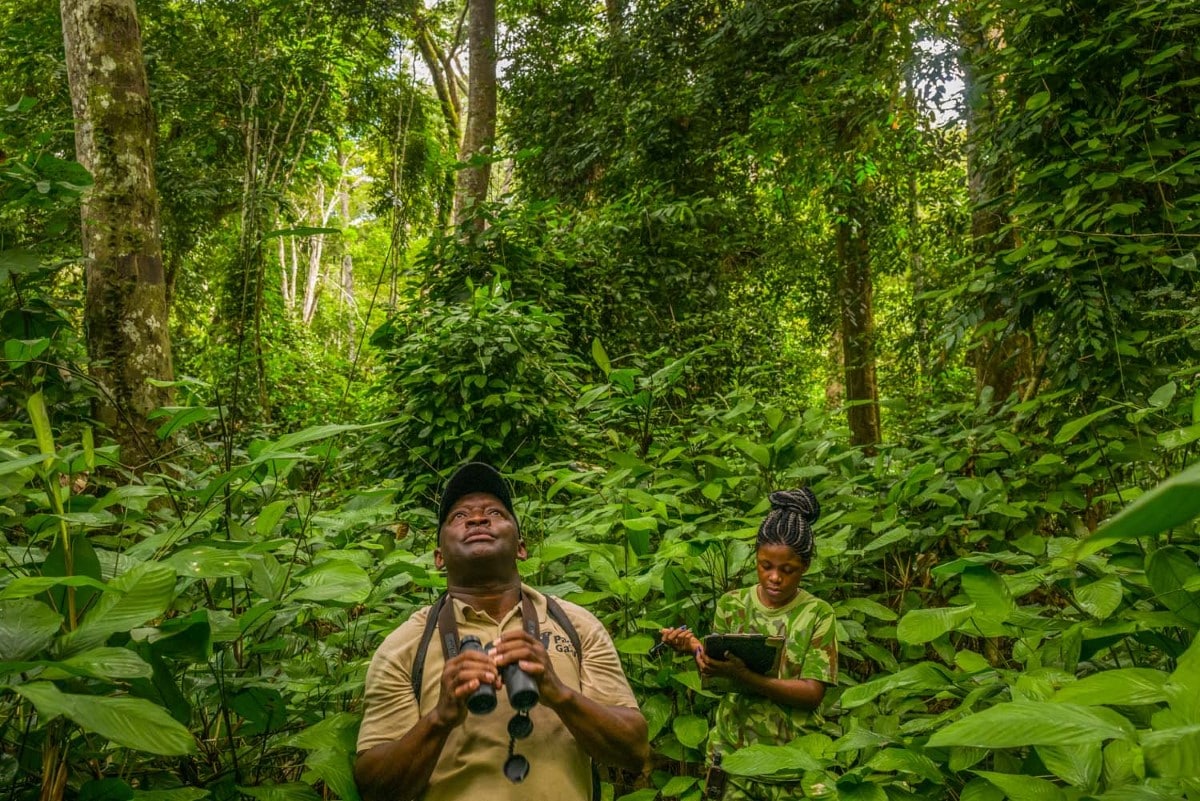
Edmond Dimoto and Lisa-Laure Ndindiwe Malata study the forest canopy during the monthly phenology study in Lopé National Park. Lopé hosts the longest continuous study of tropical tree phenology in Africa (G. S. Adamescu et al, 2018). From 1986 to the present, researchers at the site have monitored tree species that are important to the diet of gorillas, chimpanzees, and elephants. Once a month, focal tree crowns are observed from the ground (via binoculars), and the proportions of each canopy that is covered with flowers, fruit, and leaves are recorded. The researchers used these data to quantify changes in the probability of encountering flowers, unripe fruit, and ripe fruit for 73 species over a 32-year period (1986–2018). They found that trees at Lopé are reproducing less often and that the probability of encountering flowers and fruit has declined significantly over time. It is likely that climate changes experienced at the site have contributed to this shift in reproduction. Global warming has caused the minimum daily temperature to increase, on average, by 0.25°C per decade at Lopé, which may be a key factor in reduced reproduction for some tree species that rely on a critical minimum temperature to trigger flowering. Rainfall has simultaneously decreased at the site by 75 mm per decade; thus, all tree species might be suffering because of water stress. Edmond Dimoto (48), was born and raised in the Lopé Department and has been doing these monthly observations since 1996.
Jasper Doest: Website | Facebook | Instagram
All images GDT EWPY 2023, Fritz Pölking Prize, Jasper Doest. My Modern Met was granted permission to feature photos by GDT Society.
Related Articles:
Captivating Moments of Snow Monkeys Bathing in Hot Springs
Inspiring Story of Husband and Wife Wildlife Photographers Who Beat the Odds
Wildlife Photographers Unite in New Book To Highlight Beauty of Endangered Animals
New Film Follows Endangered Rhinos and Explores How Technology Can Bring the Species Back











































































